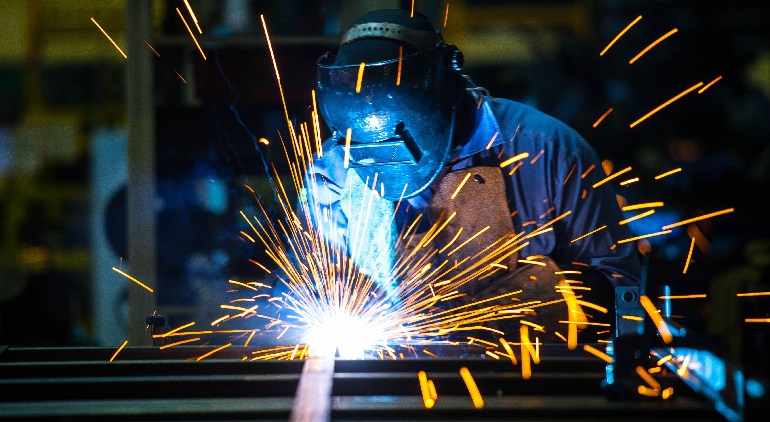Every welder knows that a welding helmet is a must-have piece of personal protective equipment. It not only protects the eyes and skin from severe sparks, but it also prevents vision damage from ultraviolet and infrared rays that are emitted by the arc. Available in a range of colour and graphics, this type of headgear also offers the welder an opportunity to add a bit of personal flair to their welding gear.
However, while visual features command attention, the protective features combined with comfort is what welders need to consider when it comes to selecting the right helmet. A welding helmet should be well-balanced and lightweight to ensure comfortable wearing all day long, provide flexible adjustments, and protect eyes and face from sparks, spatter and harmful light rays.
Modern welding helmets are more functional compared to the models used a decade ago and they are designed to accommodate a welder’s specific needs regardless of the job. All models, including the less expensive ones, must meet strict Australian safety standards which address impact resistance, flame, and light leakage.

Passive Helmets
Some welders still prefer wear conventional headgear that comes with traditional glass lens and fixed shade, which means they stay darkened at all times. They do provide great and inexpensive safety protection, however they can be more difficult to use because wearers have to lift the helmet every time they want to check their work. In addition to causing neck strain, this repetitive process can also reduce productivity.
Auto-Darkening Protection
These welding helmet models are more advanced – they adjust the shade from light to dark when an arc is initiated. Featuring a quick-changing LCD technology in the auto-darkening cartridges these helmets darken to the pre-selected shade in milliseconds. Because they eliminate unnecessary stop and start times, they don’t affect welders productivity.
Selection Considerations
Safety? Quality? Control? Style? What factors to consider when selecting a welding helmet?
Experts recommend choosing auto-darkening models that come with a full-coverage shell designed to reflect spatter and resist impact forces. Also, make sure the helmet complies with safety standards. Another safety feature to consider is a ‘test’ mode to allow you to check if the helmet is working correctly before you start your task.
The viewing size of the helmet is also an important factor. While it will depend on your preferences, a large viewing offers a better peripheral vision and can be helpful when working on large weld assemblies. Recently, some manufacturers are using a technology that alters the lenses colour spectrum to give the users a more natural view. This feature can improve your ability to control the weld puddle and reduce eye fatigue.
Auto-darkening helmets can have either internal or external controls for functions like grind or shade control. External controls offer the convenience to make some adjustments while the helmet is on the head, but the additional wiring that comes with them can be exposed to additional impacts or damage. Internal controls placed on the lens cartridges are safer and do not require external wiring. But you will have to remove the helmet almost every time you want to change settings.

